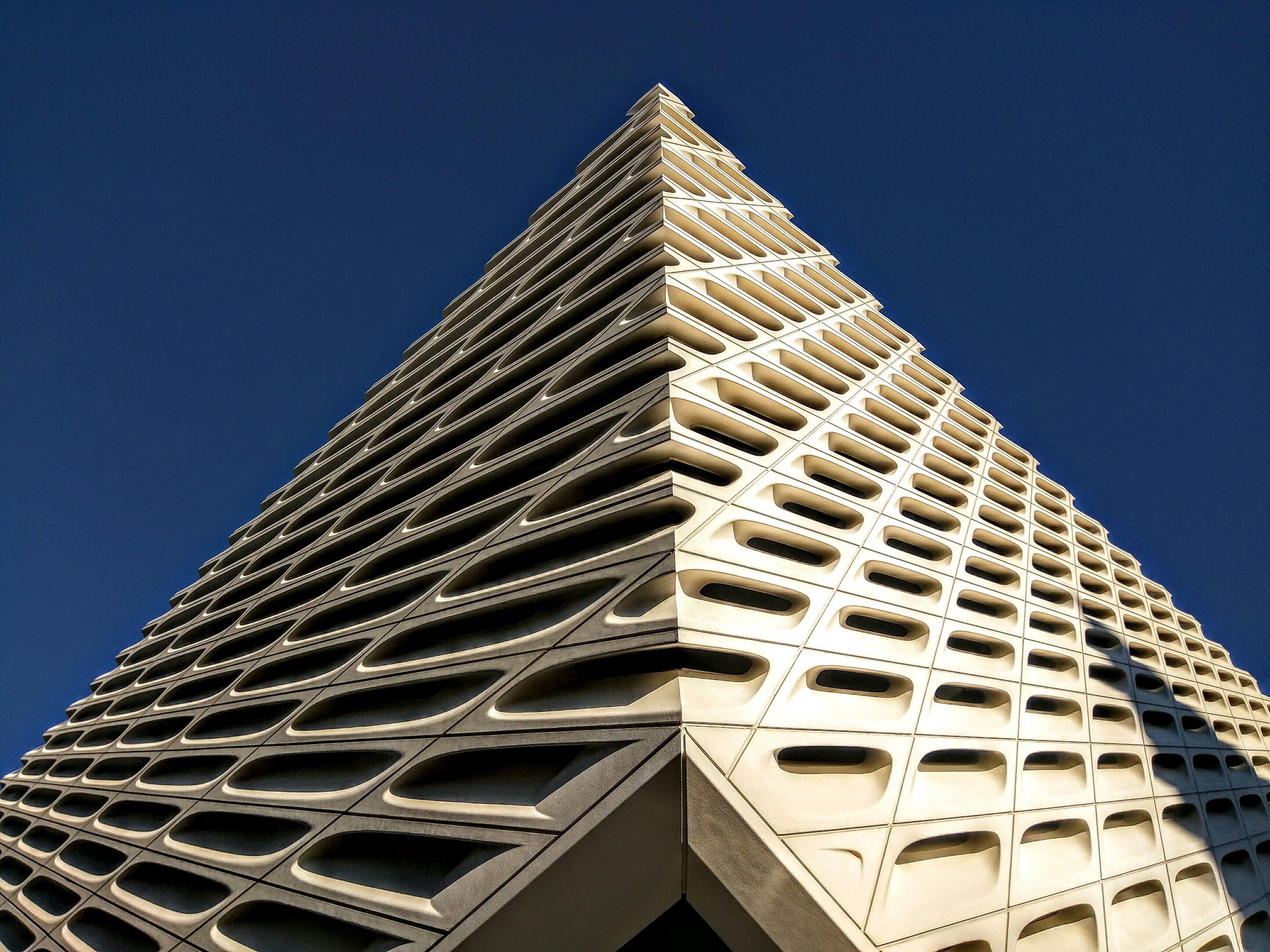

Each senior at my high school was instructed to take the last three weeks before graduation to focus on a project, internship or idea. In May 2013, I chose to work with the design team at Gensler, an architecture firm. One of their then-current projects was to co-design a new art museum in downtown Los Angeles, named The Broad. I had the opportunity to do a site visit, which was just down the street from Gensler’s office, and I saw the beginnings of and plans for what was deemed the “veil and vault” — a three-story building with a white, porous honeycomb-like outer shell and a cave-like interior leading to the gallery spaces. The design for the building was expensive and ambitious: The honeycomb wrapper exists to filter in light during the day and glow on the outside at night, and the interior seeks to propagate a sense of other-worldliness.
The Broad, which displays and stores a large portion of Eli Broad’s contemporary art collection, opened this past fall and sits on Grand Avenue across from Frank Gehry’s Walt Disney Concert Hall, contributing to the much needed revitalization of downtown Los Angeles. The Broad has already drawn large crowds from all over Los Angeles — admission is free, but to visit one must reserve tickets, which are currently all reserved through late May. The crowd at The Broad is young — the average age of a visitor is 32 — and 1 out of 4 visitors heard about it via friends’ social media posts.
Eli Broad is an entrepreneur and philanthropist who made his money by starting a real estate company, constructing and selling tract homes and later acquiring an insurance company. Eli Broad and his wife, Edith Broad, created The Broad Foundation to support education, sciences and arts, and have committed to giving 75 percent of their wealth away within their lifetimes. Among many donations to better education systems around the U.S., the Broads have spent much of their time and money attempting to reinvigorate the cultural atmosphere in Los Angeles. Broad was the founding chairman of the Museum of Contemporary Art in Los Angeles (the MOCA), donated generously to the Los Angeles Opera, built a new preforming arts center at the Santa Monica Community College and founded the Grand Avenue Committee, which seeks to revitalize the major street in downtown Los Angeles. The Broad is his newest addition to the Los Angeles arts community and to Grand Avenue. Food trucks frequently set up alongside it, and a beautiful new restaurant, Otium, was opened in tandem with the museum. The existence of The Broad itself has already had a huge impact on the pull to visit downtown Los Angeles.
Over spring break, I revisited The Broad, this time in its completed form, and I was immediately fascinated by the accurate realization of the designs I had looked at three years before. The texture of the “veil” is intriguing, and the cave-like layer between the shell and the gallery space reminded me of what I would assume the moon is like. The first piece I viewed was Yayoi Kusama’s “Infinity Mirrored Room,” for which the wait to enter can be up to seven hours, and its social media presence has been the largest for the museum overall. Alone or in pairs, the visitor steps into a small, closed room, and standing on a platform surrounded by mirrors and water, is bombarded by the optical illusion of being surrounded on all sides and depths by a starry light show.
The rest of the first-floor exhibits a multi-media, multi-frame music video performance, and then contemporary paintings in the normal exhibition space. Transportation upwards, usually straight to the third floor where the rest of the exhibition space exists is by stairs, or by elevator, one that reminds me of pneumatic tubes used to transport checks at the bank. The second floor includes office spaces, a presentation space and a transparent view into the storage space that houses the rest of The Broad’s collection. The clear-tube elevator opens directly onto the gallery space on the third floor, and the visitor immediately sees the oversized, colorful steel tulips by Koons. The third floor includes more famous and permanent pieces than the first floor, including multiple works by Koons, Ellsworth Kelly, Jasper Johns and Christopher Wool.
The Broad’s mission is to make its collection of contemporary art, compiled since the 1950s, accessible to the widest possible audience, by making it free, but also by creating a lending program to other art museums and galleries across the globe. Through diverse exhibits and education programs, the museum “enriches, provokes, inspires and fosters appreciation of art of our time,” as stated on the museum’s website.